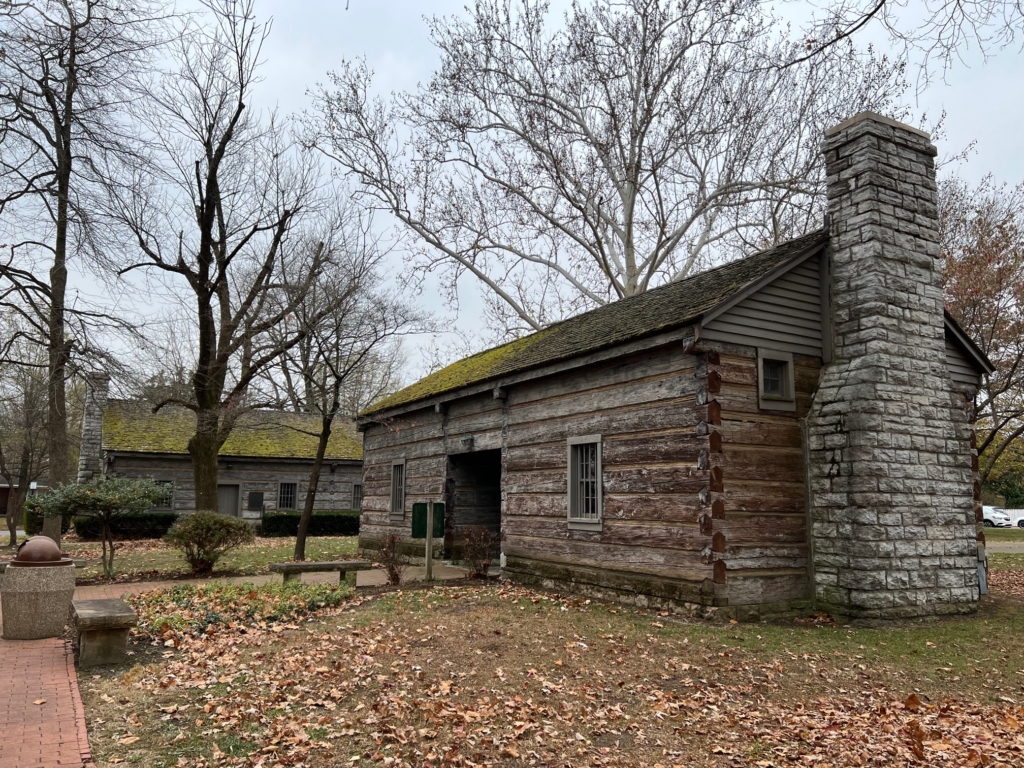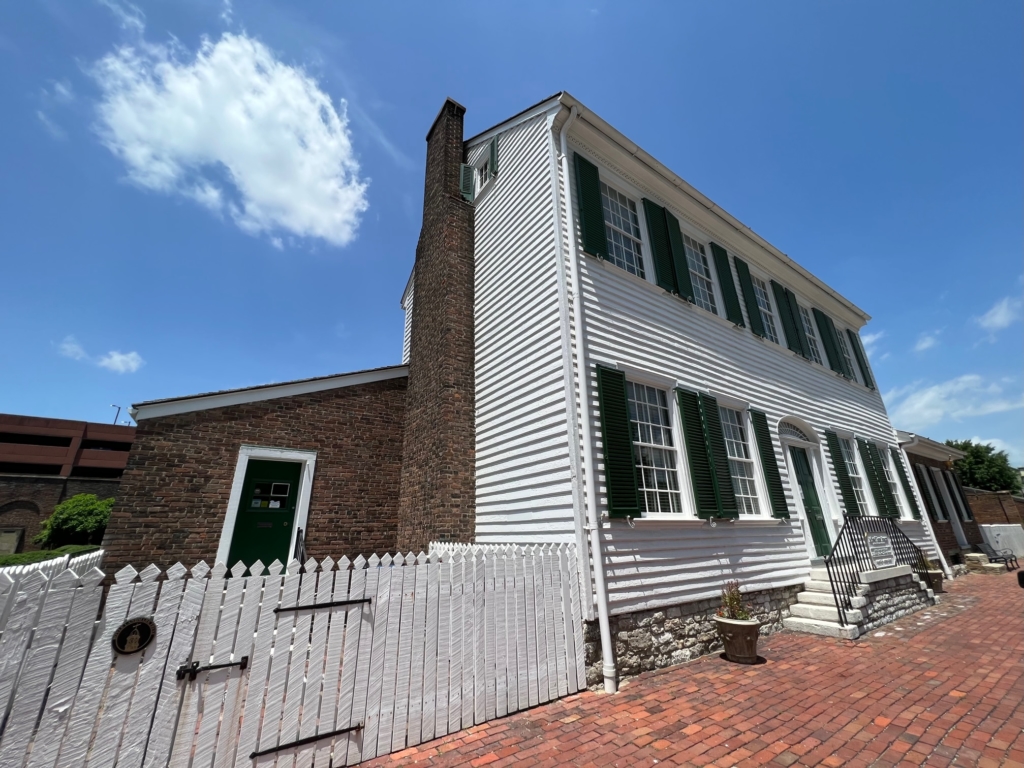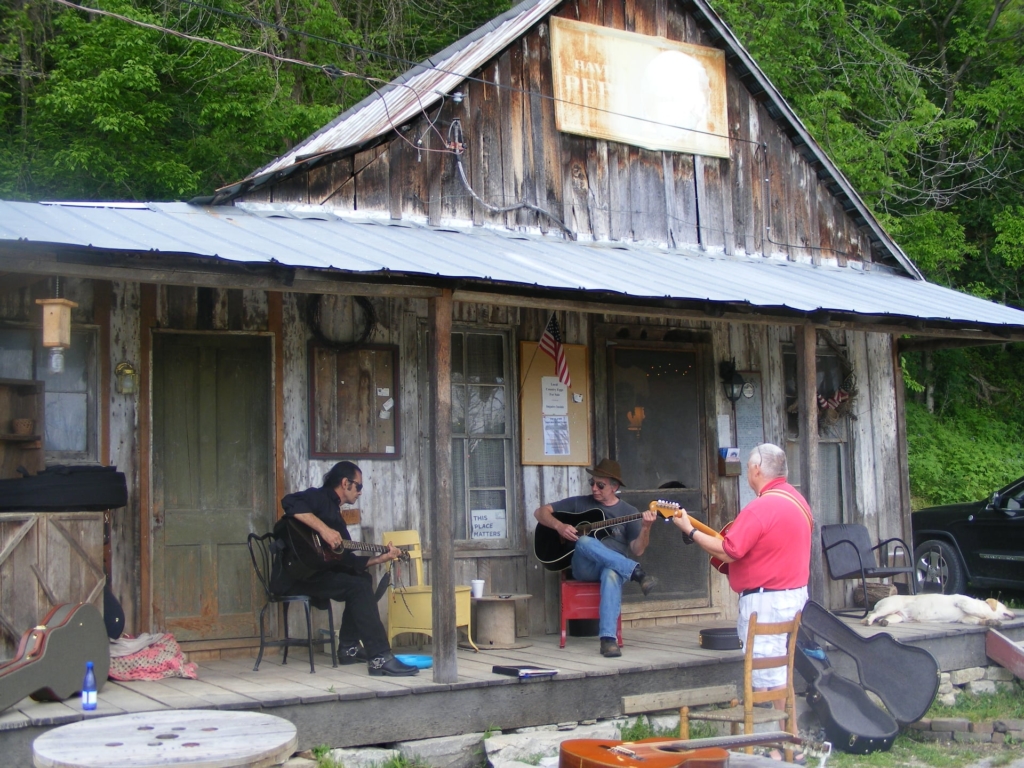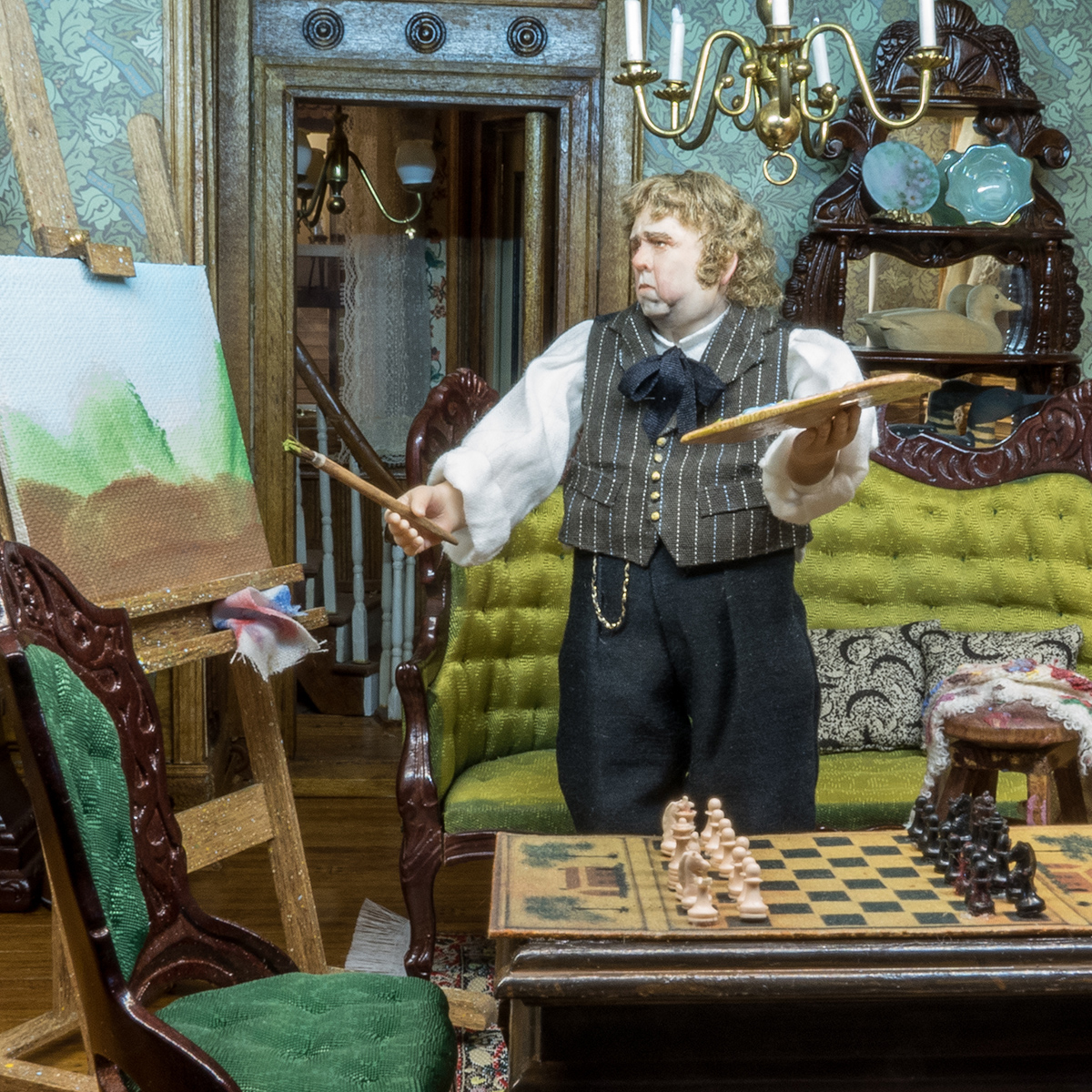One would think that the town that witnessed the birth of Kentucky would have a comfy seat from which to watch history as it happened. And one would be correct. For inside Danville buildings, American’s first documented serial killers were once held, the Father of Abdominal Surgery performed a Hail Mary on a dying woman, a merchant’s goodwill helped farmers survive another year and weapons and military equipment were stockpiled in readiness for World War II.
If these walls could talk, what stories they would tell.
Constitution Square—Jail
The scene of historic cabins and buildings clustered on a swath of green lawn on Constitution Square Historic Site in Danville’s historic downtown is a peaceful one. But this open-air museum and home to the first post office west of the Allegheny Mountains belies a grisly connection to shocking violence in the persons of the notorious Harpe Brothers, America’s first serial killers.
A replica jail stands where the original log structure was built in the late 1700s. Here, Micajah “Big” Harpe and Wiley “Little” Harpe had been locked within its cramped quarters . . . and plotted their escape.
It was the winter of 1799 and the killers (actually cousins who passed themselves off as brothers) were being held in the jail to await their trial. Weeks earlier, in December of 1798, the two had befriended a man and then murdered him—but he wasn’t their first victim and was far from the last during the Harpes’ bloody killing spree.
“The Harpes took advantage of the long, lonely roads and rural settlements of early Kentucky,” said Lauren Clontz, assistant director of the McDowell House Museum, which manages the site.

(The replica log cabin jail at Constitution Square)
When they broke out of the jail that March, the terrorizing twosome tore across Kentucky and Tennessee, leaving a trail of dead bodies in their wake.
“They continued their attacks,” said Clontz. “Big Harpe was later killed by a posse in western Kentucky after murdering a woman and her baby.
“Early Kentucky was more violent than people imagine.”
You can take free, self-guided tours at Constitution Square to see where the Harpes spent a little time behind bars. The cabins and restrooms at Constitution Square are open 10 a.m.-4 p.m. Monday through Saturday, May 6 through October. The historic site is open during daylight hours year-round.
McDowell House Museum
In 1809 America, it was an operation that many saw as being the equivalent of murder. Here, in this stately three-bedroom home with formal gardens and an apothecary, Dr. Ephraim McDowell performed an experimental abdominal surgery on 45-year-old Jane Todd Crawford, who thought she was pregnant with twins.
Crawford had traveled through Kentucky’s frontier wilderness for three days, on horseback no less, for the risky 25-minute operation that involved slicing a nine-inch incision into her abdomen and spewing her intestines onto the table. And she endured it all with no anesthetic—an invention that was still 37 years into the future.
“She knew it was her last shot of survival,” said Clontz. “Without it she would die a slow painful death from an ovarian tumor. The surgery she needed was believed to be impossible, but it wasn’t.”

(The McDowell House is located on 2nd Street, across from Constitution Square)
The surgery saved Crawford’s life, and she lived another 32 years. It became the first-known successful ovariotomy on record—also remembered as an early successful abdominal surgery—and McDowell was written into the history books.
“The building is fully furnished in the style of the early 1800s when Dr. McDowell lived here,” Clontz said of the National Historic Landmark. Besides the bedrooms, it has three reception rooms and a kitchen and a pharmacy next door.
“Younger visitors are surprised by the bedpans, and the lack of other modern comforts like air conditioning,” she said. “Adults enjoy the more nuanced pieces like the bladder stone removal kit that was used on James K. Polk.”
The museum is open for tours Tuesday through Saturday year-round. Purchase tickets at www.mcdowellhouse.com.
Penn’s Store
For the people of the rural Rollings community, Penn’s Store was the first post office. For others, it was the place to find “Penn’s Cure,” an invention of Martin Wilson “Dick” Penn, who had been given a grant by the governor of Kentucky to practice medicine and administer drugs. It was a popular stop for travelers and traders and an essential business for the local farmers, who relied on it to see them through hard times.
“We have many old ledgers filled with accounts of folks that were ‘carried’ for many months, even a year or more, until the families were able to pay their bills,” said Dawn Lane Osborn.
The oldest country store in America being run continuously by the same family, Penn’s dates back to 1845 and possibly stretches back even farther. The store has been in the Penn family since 1850, when William Spragens sold it to Gabriel Jackson Penn. Osborn is the sixth generation of Penns to own and operate this iconic piece of Americana.
“In its earliest days, Penn’s Store served the needs of an active and growing rural farming community,” said Osborn.

(It’s not unusual to find folks picking a guitar on the front porch of Penn’s Store)
As money was often hard to come by, trading at Penn’s was brisk business, with folks bartering furs, chickens, eggs and other commodities for goods and services at the store.
The store has endured both fire and flood, may be haunted, and is known for events including the Great Outhouse Blowout, Kentucky Writers Weekend and impromptu jams. (The late Jeanne Penn Lane—fifth generation—was a contract songwriter for a publishing company in Nashville and Osborn is a singer/songwriter.)
“People come in to stay a few minutes and end up spending an hour or more, talking, browsing and buying a token of their visit, meeting new people, getting a snack and sitting down, reminiscing, learning about something or just getting something off their chest,” said Osborn. “Penn’s Store remains a place of solace and gathering, to get just what you need.”
Penn’s Store is open 1-5 p.m. on Saturday and Sunday, or until the last person leaves. Private and group tours may be scheduled in advance other days. Info: pennstore@aol.com or via Facebook messenger.
Great American Dollhouse Museum
Inside the sprawling structure, a tiny tale unfolds.
The Great American Dollhouse Museum is Kentucky’s smallest cultural heritage museum and the only one of its kind specializing in portraying the social history of the United States through miniature vignettes that narrate the everyday life of ordinary people.
Museum director and curator Lori Kagan-Moore calls it “reality shrunk down,” but the structure housing these history lessons is larger than life. Built in 1939 by the Works Progress Administration (WPA), a program created by Franklin D. Roosevelt that put millions to work during the Great Depression, the 6,000-square-foot building housed the City of Danville Department of Public Works for 19 years before becoming a National Guard Armory from 1948 to 1955.
“We have photographs donated by community members of their relatives in military uniforms— with cannons and jeeps—outside the building in the early 1940s,” said Kagan-Moore, who bought the building with her husband in 2006.

(There are more than 200 miniature displays at the Great American Dollhouse Museum)
“We completely renovated it, giving it its first real HVAC system and its first proper commercial plumbing,” she said. “The property had to be reshaped to enable us to plant grass, and we landscaped the two-acre property.”
A furniture restoration business and a moving and storage company also occupied the building at different times before it was transformed into the Great American Dollhouse Museum.
Inside, beneath the 20-foot hardwood ceilings and steel bowstring trusses are more than 200 intricately detailed dollhouses, miniature buildings and room boxes. From the Native American and Colonial eras to the Civil War and the Old West periods and onward into the twentieth century, each shares a slice of life of ordinary people at work and play.
The museum is open 11 a.m.-5 p.m. Wednesday through Saturday from March-December. Admission: $12/general; $10/seniors; $8 kids ages 4-16; free kids under 4.
— Story written by Kathy Witt.

